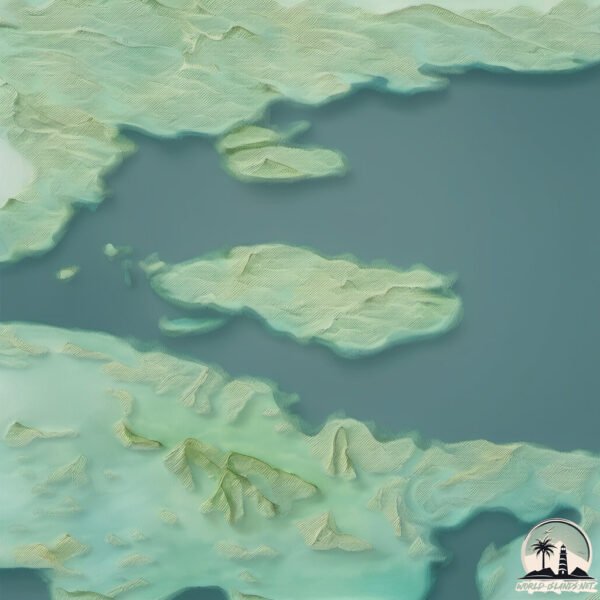Welcome to Ledge , a Continental island in the Labrador Sea, part of the majestic Atlantic Ocean. This guide offers a comprehensive overview of what makes Ledge unique – from its geography and climate to its population, infrastructure, and beyond. Dive into the details:
Geography and size of Ledge
Size: 8.573 km²Coastline: 17.9 kmOcean: Atlantic OceanSea: Labrador SeaContinent: North America
Ledge is a Small Island spanning 8.6 km² with a coastline of 17.9 km.
Archipel: –
Tectonic Plate: North America – Covers North America and parts of the Atlantic and Arctic Oceans, characterized by diverse geological features and varying levels of seismic activity.
The geographic heart of the island is pinpointed at these coordinates:
Climate and weather of Ledge
Climate Zone: ContinentalClimate Details: Subarctic ClimateTemperature: Cold Summer
Climate Characteristics: Characterized by long, extremely cold winters and short, cool summers, often found in northern latitudes of North America and Eurasia.
Topography and nature of Ledge
Timezone: UTC-03:30Timezone places: America/St_JohnsMax. Elevation: 53 m Mean Elevation: 18 mVegetation: Open WoodlandTree Coverage: 44%
The mean elevation is 18 m. The highest elevation on the island reaches approximately 53 meters above sea level. The island is characterized by Plains: Flat, low-lying lands characterized by a maximum elevation of up to 200 meters. On islands, plains are typically coastal lowlands or central flat areas.
Dominating Vegetation: Open Woodland
Vegetation: 8 vegetation zones – Very Highly Diverse Island
Infrastructure and Travelling to Ledge
Does the island have a public airport? no .
Does the island have a major port? no .
The mean population of Ledge is 0 per km². Ledge is Uninhabited. The island belongs to Canada .
Continuing your journey, Narrow is the next notable island, situated merely km away.
Brett Eldredge & Meghan Trainor Perform 'Islands In the Stream' | CMT Crossroads
Sail away with us to another world with this #CMTcrossroads performance of 'Islands In the Stream.' #BrettEldredge ...
Brett Eldredge & Meghan Trainor Perform 'Islands In the Stream' | CMT Crossroads
Sail away with us to another world with this #CMTcrossroads ...
Sail away with us to another world with this #CMTcrossroads performance of 'Islands In the Stream.' #BrettEldredge ...
THE LEDGE | Official Trailer | Paramount Movies
Now Available on Digital & On Demand A rock climbing adventure between ...
Now Available on Digital & On Demand A rock climbing adventure between two friends turns into a terrifying nightmare. After Kelly ...
History of Ram Island Ledge Light
a quick history of the lighthouse at Ram Island.
a quick history of the lighthouse at Ram Island.
Canada is classified as Developed region: G7: Group of Seven – Major advanced economies, including Canada, France, Germany, Italy, Japan, the United Kingdom, and the United States. The level of income is High income: OECD.
News – Latest Updates and Headlines from Ledge
Stay informed with the most recent news and important headlines from Ledge. Here’s a roundup of the latest developments.
Loading...
Please note: The data used here has been primarily extracted from satellite readings. Deviations from exact values may occur, particularly regarding the height of elevations and population density. Land area and coastline measurements refer to average values at mean high tide.

